Amazon Today Program Explained

Amazon Today is a program that enables businesses with a retail presence to showcase their in-store inventory on Amazon’s storefront, providing same-day delivery and in-store pickup of their products to millions of Amazon customers across the country. This article discusses the benefits and challenges of using Amazon Today and provides strategies to maximize its benefits.
What Amazon Today Can Do for Your Retail Business
Amazon Today allows retail businesses to showcase their in-store inventory on Amazon’s storefront. This expands their fulfillment options for items purchased on Amazon.com, allowing them to offer same-day delivery and in-store pickup. The program provides reliable same-day delivery at scale to enterprise retail partners via Amazon Flex Driver delivery partners. The program also includes built-in customer service, real-time inventory, out-of-stock buffers, and capacity management controls, allowing partners to take full advantage of their existing technology investments while adding a new sales channel to drive incremental order volume at retail stores nationwide.
How to Get Started with Amazon Today
Setting up an account with Amazon Today is a straightforward process. When you sign up, Amazon will assign a single point of contact who will work with you directly to onboard your desired stores and inventory selection.
You will need to integrate with Amazon’s set of APIs to list your selected in-store inventory on Amazon.com and fulfill orders from your retail locations via Amazon’s delivery network.
After quality assurance, Amazon’s launch team will work with your store operations team to incorporate Amazon’s standard operating procedures and customize individual store settings for both customer and driver pickup.
Finally, Amazon’s launch team will create a collaborative ramp plan with you to scale the program to your retail network at a pace that fits your brand’s needs.
Benefits for Retail Businesses:
There are several benefits of using Amazon Today for businesses, including:
- Increased visibility: Businesses can showcase their inventory on the world’s largest online marketplace, reaching millions of potential customers.
- Faster delivery: Amazon Today promises same-day delivery or in-store pickup, making it an attractive option for customers who want their products quickly.
- Brand recognition: Businesses can use their own branded packaging for all store orders, which can help increase brand recognition and engagement.
- Additional revenue potential: In-store pickup can convert foot traffic into additional revenue potential when customers pick up their orders from local retail stores.
- Seamless integration: Amazon Today includes built-in customer service, real-time inventory, out-of-stock buffers, and capacity management controls, allowing businesses to take full advantage of their existing technology investments.
Key Strategies for Leveraging Amazon Today for Maximum Results:
To get the most out of Amazon Today, businesses can adopt several strategies. One strategy is to offer discounts and promotions for same-day delivery or in-store pickup to incentivize customers to use the program. Another strategy is to offer bulk orders through Amazon Today to take advantage of the program’s competitive pricing structure. Businesses can also use data analytics to monitor inventory and pricing, allowing them to make data-driven decisions to optimize their performance on the program. Finally, businesses can use the program as a tool to increase brand awareness and engagement by using their own branded packaging.
Strategy Summary:
- Offer discounts and promotions for same-day delivery or in-store pickup.
- Order in bulk to take advantage of lower pricing and reduce shipping costs.
- Optimize inventory management by monitoring and adjusting stock levels to meet demand.
- Consider pricing strategies- ensure you are competitive while still making a profit.
- Use data analytics to make data-driven decisions to optimize performance.
- Provide excellent customer service to ensure customer satisfaction and build brand loyalty.
Pros and Cons of Using Amazon Today for Businesses
Pros: Summarizing the Benefits
- Increased Sales: Retail businesses can offer same-day delivery or in-store pickup options for their customers, which can increase sales and drive revenue.
- Increased Visibility: By listing their in-store inventory on Amazon’s storefront, businesses can reach millions of customers and increase their visibility and brand recognition.
- Improved Customer Experience: The program’s built-in customer service and real-time inventory updates can improve the customer experience and increase customer satisfaction.
- Scalability: The program’s scalability allows businesses to expand their fulfillment options and reach more customers without significant investments in infrastructure or technology.
Cons: Common Challenges
- Inventory Management: One of the main challenges when utilizing Amazon Today is managing inventory to ensure that products are readily available for fast and efficient delivery. To overcome this challenge, businesses should carefully monitor their inventory levels and adjust their stock levels to meet demand.
- Profit Margins: Amazon Today’s competitive pricing structure can make it difficult for businesses to turn a profit, especially for smaller businesses. To overcome this challenge, businesses should carefully consider their pricing strategies and aim to strike a balance between competitiveness and profitability.
- Technical Integration: Businesses must integrate their technology and systems with Amazon Today. While “seamless integration” is advertised as a benefit of the program, this can be time-consuming and require technical expertise.
- Dependency on Amazon: Businesses using Amazon Today become dependent on Amazon’s delivery network and technology, which can be a risk if Amazon changes its policies or pricing structure. Additionally, the delivery network is limited to certain geographic areas, which may limit the reach of businesses.
Overall, while there are some potential challenges to using Amazon Today, the benefits of increased sales, visibility, and improved customer experience make it a compelling option for retail businesses looking to expand their fulfillment options and reach more customers.
Here you can review the full conditions and requirements:
| AMAZON TODAY STANDARDS AND REQUIREMENTS Delivery Fee. As of the date this Amazon Standards and Requirements is published, the Delivery Fee shall be 6.99 USD for each order of Delivery Products. We may change the Delivery Fee from time to time by updating these Amazon Today Standards and Requirements. Receipt of Units. Our confirming that an Amazon Courier has picked up a Unit from the Pickup Location does not mean that the Unit has been received by us without loss or damage, or that any loss or damage to any Unit later discovered occurred after we confirmed receipt. If there is a loss of or damage to any Units while in the possession of an Amazon Courier, unless we issue a customer refund or determine that the loss or damage was caused by you or any of your employees, agents, contractors or personnel we will, as your only remedy, pay you the Purchase Price of the Unit less any Fees that are applicable to the Unit (“Reimbursement Amount”) for the lost or damaged Units and you will, at our request, provide us a valid tax invoice for the Reimbursement Amount paid to you. If we pay you the Reimbursement Amount of a Unit we may dispose of the Unit. Payment of the Reimbursement Amount is the total liability that we or our agents, service providers, or representatives may have, and your only right or remedy for lost or damaged Units. At all other times, you will be solely responsible for any loss of or damage to any Units. Reverse Logistics. We may return Units to you for any reason and these returned Units will be delivered to your designated returns address or at any of your participating physical stores. We will make a commercially reasonable effort to return the Unit. If (a) we have an outdated or incorrect address, (b) Your Amazon Today Products are topical or ingestible, (c) we reasonably determine that Your Amazon Today Products are uneconomic to return, or (d) we are otherwise unable to return the Units to you, then we may choose to dispose of the Units in the manner we prefer. Title to each disposed Unit will transfer to us at no cost to us and we will retain any proceeds received from the disposal of any Unit. Unsuitable Units. You will not provide to an Amazon Courier, and we or the Amazon Courier may refuse to accept, any Unsuitable Unit. “Unsuitable Unit” means a Unit: (a) that is defective, damaged, or lacking required label(s); (b) for which the Required Product Information was not properly registered with Amazon before shipment or does not match the product; (c) that is an Excluded Product or otherwise does not comply with the Agreement (including applicable Program Materials); (d) that Amazon determines is unsellable or unfulfillable; or (e) that Amazon determines is otherwise unsuitable. Customer Support. We will provide first-level customer service for all orders of Your Amazon Today Products for fulfillment through the Amazon Today Program, and you will cooperate with us to develop processes for the hand-off of customer-service issues to you, if necessary. We may resolve all customer service issues, including those relating to packaging, handling and shipment and customer refunds, adjustments, and other concessions related to such orders. We may determine whether a customer will receive a refund, adjustment, or other concession for any order, and require you to reimburse us for any reasonable related costs or expenses where we reasonably determine you have responsibility for the same (including with respect to any refunded state and local sales tax amounts). Customer Returns and Refunds. You will accept customer returns of Your Amazon Today Products at any of your participating physical stores and at your preferred mailing address according to the established processes and procedures identified by Amazon. If a customer promise is not met for a particular Unit (for example, due to a missing, lost, incorrect, damaged, or expired Unit or the failure to deliver a Unit to a customer within the applicable delivery window), and we determine that the failure to meet the customer promise is caused by us or any of our employees, agents or contractors, we will, as your only remedy, process a refund to the customer without requiring you to reimburse us. In such cases we will be entitled to retain the applicable Fees payable to us. In all other circumstances where a customer promise is not met, you will be responsible for the amount of any customer refund and all associated costs and will reimburse us for any costs incurred by us in connection with the same. Returned Units. If we provide a refund to a customer as described in this document and that customer returns the original Unit to us, we will be entitled to dispose of the Unit or, if it is a Unit that is not an Unsuitable Unit, we may, at our option, return such Unit to you. If we return such Unit to you, you will reimburse us for the price of the item on the original order of the returned Unit. Product Information, and Participating Store Information. In addition to your obligations under Section S-1 of the BSA, in order to participate in the Amazon Today Program, for each of Your Amazon Today Products, you must submit to Amazon, through a designated application program interface (“Designated API”) or such other means we authorize in the Program Materials, information required by Amazon that accurately reflects the offers in each of your participating physical stores for their respective Amazon Today Products. Use of the Designated API is governed by the Selling Partner API Terms of the BSA and the Developer Agreement. All Your Amazon Today Product inventory you submit to Amazon must be available in the physical stores you indicate and on the Amazon Site or Amazon Associated Properties; you are responsible for setting stock buffers to limit available units for purchase on the Amazon Site and Amazon Associated Properties. You will provide accurate and complete Required Product Information for each of Your Amazon Today Products and information about your participating stores as specified the Program Materials, and promptly update that information as necessary to ensure it at all times remains accurate and complete. Picking and Packing. You will, in accordance with the Program Materials, pick and pack units of Your Amazon Today Products (“Units”) in the quantities included in the applicable Order Information, and stage them at the appropriate Pickup Location to be picked up by (a) a customer, as facilitated by your store associate; or (b) Amazon Couriers. “Pickup Location” means a location where you stage individual customer orders for pickup by a customer through a store associate, or by an Amazon Courier. The initial Pickup Location is a loading area within or around your applicable retail location, as designated by us. We may designate new Pickup Locations from time to time. For each order, you will follow the customer pick-up process defined in the Program Materials and notify us when that pickup is complete through the Designated API or such other means as we authorize in the Program Materials. Performance Standards. In addition to any standards that may be set forth elsewhere in the Agreement, Program Materials, or Program Policies, you and each of your participating store locations must (a) maintain a Pre-Fulfillment Cancellation Rate of less than 0.5%; (b) a Pickup Readiness Rate of 99.0%; and (c) keep up-to-date and accurate store-level data, including hours of operation and sellable inventory for Your Amazon Today Products. The performance standards described in (a) and (b) above are measured on a monthly basis, and enforcement will begin on the third calendar month after the launch of each store. Meeting these performance standards are a requirement for your continued participation in the Amazon Today Program at each of your locations. “Pickup Readiness Rate” is defined as the percentage of orders successfully picked, packed, and staged within 60 minutes of the order notification being sent from Amazon’s systems to your order management system, excluding orders that were cancelled prior to a shipping label being generated. “Pre-Fulfillment Cancellation Rate” is defined as the number of orders cancelled prior to being fulfilled divided by the total number of orders sent to your order management system. The number of orders cancelled for the purpose of determining this performance standard does not include those cancelled by the customer or Amazon unless due to your failure to timely fulfill the order. Effective January 15, 2023 |
I hope you found this article helpful. If you are experiencing issues with your Amazon Seller Account and your Seller Account already received a warning or is under a review, I can assist you and help you resolve the matter.
In order to receive a professional advice and get help with your Amazon issue, feel free to subscribe and reach out through my dedicated assistance help page at www.onlyfans.com/kikaangelic, where I provide help with Amazon related matters in exchange for a small $24.99 fee.
If you have an Amazon-related issue, feel free to join and post into my large Amazon Seller Performance – Friendly Advice – Worldwide Facebook group, where you will be very welcome.
Many Amazon sellers recently started trading stocks and crypto currencies, hoping to diversify their income, which is a very good idea with all the uncertainty which comes with the platform. For this reason, we launched a new Facebook group, Crypto Arbitrage Income (Bitcoin, Crypto, Altcoins, Blockchain, Trading) – feel free to join us and forget about the troubles of selling on Amazon for a moment!
Additionally, here you can watch my YouTube video, where I am presenting you several secret tips about appealing Amazon Seller Account suspensions (don’t be confused by the opening of the video, where I am enjoying a vacation – it’s a part of the story):

If you are one of the millions of third party sellers doing business across Amazon’s platforms, you are already used to having to adapt to the announcements of extremely strict, unexpected policies which lack clarifications of the most crucial points.
This evening, Amazon suddenly e-mailed their third party sellers on the United States platform to inform them about a newly-announced policy called “On-time delivery rate” or OTDR. Here you can review the full policy.
Many sellers reacted with confusion, anger and outrage and expressed their views on social media. In this article, I would like to respond with clarification to the most common concerns.
Below you can review the e-mail from Amazon regarding On-time delivery policy:
| New updates to our On-time delivery policy and changes to shipping settings Dear seller, Fast and accurate delivery is essential for customers and often determines where they choose to shop. Over time, we’ve learned that the best way to ensure reliable on-time delivery for customers is to set accurate Handling and Transit Times and to choose reliable shipping services. To help reduce late deliveries and improve delivery speeds, we’re updating our On-time delivery rate (OTDR) policy. Effective 09/23/2024 [60 days from today], you’ll need to maintain a minimum 90% On-time delivery rate (OTDR) without promise extensions to have seller-fulfilled products listed on Amazon.com. We will start by addressing sellers with the lowest OTDR performance. This policy does not apply to offers using the Fulfilled by Amazon (FBA) service because sellers are not responsible for on-time delivery promises for FBA orders. Your current OTDR, calculated between 7/5/2024 and 7/18/2024 is 100.0%. Your account is currently in healthy OTDR standing. You can manage your delivery dates using the tools we’ve provided, or you can manually adjust your Transit Time and Handling Time settings. We designed these tools to set accurate delivery dates, reduce late deliveries, and to meet or exceed the minimum OTDR requirement, and because Amazon is making calculations on your behalf that affect OTDR, you will get OTDR protection from late deliveries on items shipped through Standard Shipping if you use all three tools as follows: a) Shipping Settings Automation (SSA), for Professional sellers, sets accurate delivery dates through automated Transit Time calculations of your preferred shipping services. You must choose one of the preferred ship methods in the SSA templates, which will mark the Transit Time on the shipping template as “Managed by Amazon”. b) Automated Handling Time (AHT), for Professional sellers, sets accurate Handling Times per SKU based on how long it usually takes you to pass each SKU to carriers. You must ensure that AHT is enabled in your shipping settings. c) Amazon Buy Shipping, for both Professional and Individual selling plans, sells shipping labels that use highly-reliable ship methods. You can use Amazon Buy Shipping through Manage Orders, Shipping API, Veeqo, or select multi-channel integrators with access to Amazon Buy Shipping. You must choose shipping labels marked as “OTDR Protected” when using Amazon Buy Shipping or Veeqo. We’ll also make changes to shipping settings to help Professional sellers set more accurate delivery dates: a) Transit Time settings: On 08/24/24 [30 days from today], our Transit Time requirements will be updated to match the delivery capabilities of shipping services. If you are shipping within the contiguous United States (excluding Hawaii, Alaska, and US territories), you can set a maximum Transit Time of 5 days for Standard shipping and 8 days for Free Economy shipping. To learn more, go to Default Transit Time. b) Handling Time settings: On 09/23/24 [60 days from today], to help improve the accuracy of Handling Time, we’ll enable Automated Handling Time (AHT) for sellers that have a manually configured Handling Time that is 2 or more days slower than their actual Handling Time (also known as a Handling Time gap). To see your Handling Time gap, review your Fulfillment Insight dashboard. You can review your OTDR on your Account Health dashboard. We also recommend you review the “Deliver by” dates for your orders to ensure they match the expected delivery date without promise extensions. To learn more, go to On-time delivery. Thank you, Fulfilled By Merchant Team |
This is the post published by Amazon regarding the matter elsewhere:
| New updates to our on-time delivery policy and shipping settings Fast and accurate delivery is essential for customers and often determines where they choose to shop. Over time, we’ve learned that the best way to ensure reliable on-time delivery for customers is to set accurate handling and transit times and to choose reliable shipping services. To help reduce late deliveries and improve delivery speeds, we’re changing our on-time delivery rate (OTDR) policy. Effective September 25, 2024, you’ll need to maintain a minimum 90% OTDR without promise extensions to have seller-fulfilled products listed on Amazon.com. We will start by addressing sellers with the lowest OTDR performance. For a great customer experience, we recommend that you maintain a 95% or greater OTDR for all seller-fulfilled orders. This policy does not apply to offers using the Fulfillment by Amazon (FBA) service because sellers are not responsible for on-time delivery promises for FBA orders. Also, we’ll make the following changes to shipping settings to help sellers with Professional selling plans set accurate delivery dates: Transit time settings: On August 25, 2024, our transit time requirements will be updated to match the delivery capabilities of shipping services. If you’re shipping within the contiguous United States (excluding Hawaii, Alaska, and US territories), you can set a maximum transit time of five days for standard shipping and eight days for free economy shipping. To learn more, go to Default transit time. Handling time settings: On September 25, 2024, to help improve the accuracy of handling time, we’ll enable automated handling time for sellers that have a manually configured handling time that is two or more days slower than their actual handling time (also known as a handling time gap). To see your handling time gap, review your Fulfillment Insight dashboard. We understand changes like this are significant and require time to prepare. You can manage your delivery dates using the tools we’ve provided, or you can manually adjust your transit time and handling time settings. We designed these tools to set accurate delivery dates, reduce late deliveries, and to meet or exceed the minimum OTDR requirement, and because Amazon is making calculations on your behalf that affect OTDR, you will get OTDR protection from late deliveries on items shipped through standard shipping if you use all three tools as follows: Shipping Settings Automation (SSA), for Professional selling plans, sets accurate delivery dates through automated transit time calculations of your preferred shipping services. You must choose one of the preferred ship methods in the SSA templates, which will mark the transit time on the shipping template as “Managed by Amazon.” Automated handling time, for Professional selling plans, sets accurate handling times per SKU based on how long it usually takes you to pass each SKU to carriers. You must ensure that automated handling time is enabled in your shipping settings. Amazon Buy Shipping, for both Professional and Individual selling plans, sells shipping labels that use highly-reliable ship methods. You can use Amazon Buy Shipping through Manage Orders, Shipping API, Veeqo, or select multi-channel integrators with access to Amazon Buy Shipping. You must choose shipping labels marked as “OTDR Protected” when using Amazon Buy Shipping or Veeqo. You’ll receive an email with your current OTDR and recommendations on how to improve if you’re below the minimum requirement. To learn more, review your OTDR on your Account Health dashboard or go to On-time delivery. |
While this policy brings nothing new to most FBM Amazon sellers who are based in the United States or major countries with Amazon marketplace presence, it may sound confusing and bring uncertainty to Amazon sellers outside of the Valid Tracking Rate criteria, who don’t have access to Buy Shipping Services. I would like to address the most common questions.
What does OTDR mean for international sellers?
For sellers based in smaller countries all over the world, including Europe, access to easily available international online trackable shipping is an unachievable luxury.
In smaller countries, there is no infrastructure to facilitate international shipping with online tracking. As the OTDR policy states, using the Buy Shipping Services is the recommended way of complying with the OTDR policy. However, Buy Shipping Services are not available in countries with lack of international online tracking services offered and provided by carriers.
Because of this, sellers with no access to Buy Shipping Services have always been exempt from the Valid Tracking Requirement and also any other tracking-related metrics and policies.
OTDR applies to all sellers equally. According to the policy, effective September 25, 2024, you must maintain a minimum 90% on-time delivery rate (OTDR) without promise extensions to have seller-fulfilled products listed on Amazon.com. An OTDR below 90% can result in restriction of your ability to have seller-fulfilled products listed.
If your OTDR is below 90%, you can appeal by clicking on “Submit appeal” at the top of your Account Health dashboard. Sellers on Individual selling plans or sellers on a Professional selling plan but shipping from outside the US must submit an appeal request indicating how they will improve their OTDR.
However, the OTDR measures the percentage of your tracked seller-fulfilled items that were delivered on or before the seller-promised “Deliver by” date. OTDR is the average of all of your tracked shipped items, not just a specific SKU or shipment.
This means that if you are not subject to Valid Tracking Rate requirement, then only the performance of your tracked FBM orders will be measured for OTDR percentage calculation.
Please note that the OTDR policy doesn’t mean that you will now have to ship every FBM order tracked.
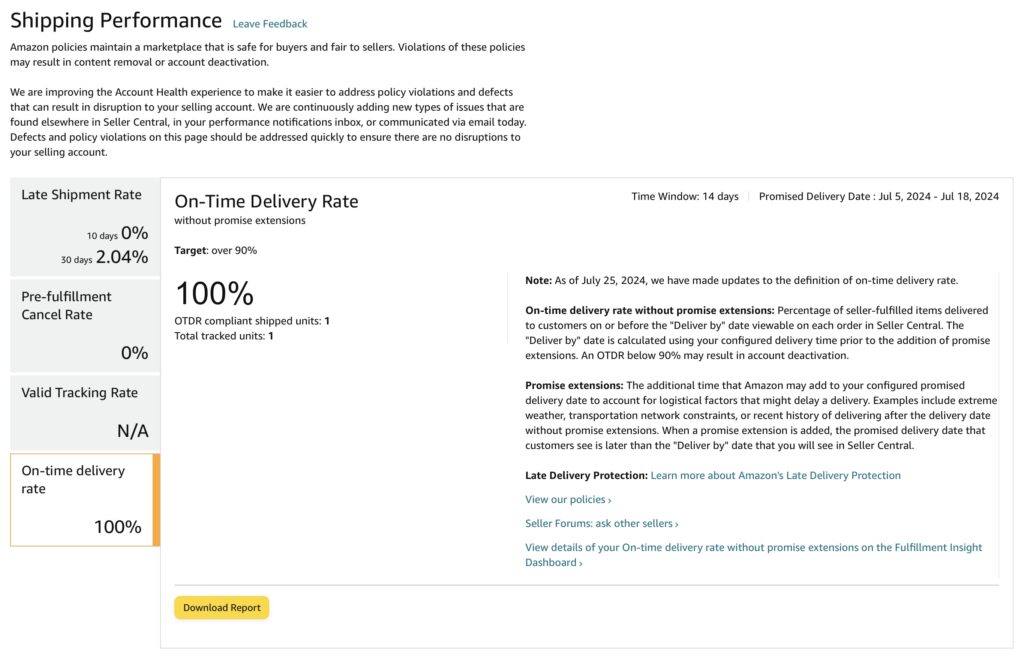
Does Amazon offer any tools for international sellers that can help them improve their OTDR and meet the Amazon’s OTDR requirements?
No. OTDR Protection is only applicable to Professional sellers shipping from the US, as all of the required tools are currently not available on Individual selling plans or to Professional sellers that are shipping from outside of the US.
This indicates that if you are an international Amazon Seller who decides to ship orders tracked, you will need to carefully select a carrier who can deliver within each order’s promised Estimated Delivery Date, otherwise you may have your FBM shipping ability revoked.
What are “Promise Extensions”?
Promise Extensions are the additional time that Amazon may add to your configured promised delivery date to account for logistical factors that might delay a delivery. Examples include extreme weather, transportation network constraints, or recent history of delivering after the delivery date without promise extensions. When a promise extension is added, the promised delivery date that customers see is later than the “Deliver by” date that you will see in Seller Central.
When your order is subject to a Promise Extension, the customer may be unable to open an A-Z claim and will be advised to wait until the order gets delivered.
Where can I access my current OTDR performance?
The OTDR metric is currently only available on the United States platform. You can view your performance by accessing the Account Health Dashboard, where the metric is on the right side, under Shipping Performance as “On-Time Delivery Rate without promise extensions”.
Where to get more help and information regarding OTDR
If you have any other questions related to the OTDR and need fast and professional assistance provided for free and without wait, join our discussion forum for Amazon Sellers.
To stay in touch on Facebook, feel free to join and post into my large Amazon Seller Performance – Friendly Advice – Worldwide Facebook group, where you will be very welcome too.
Here, you can also review the full OTDR policy reposted from Amazon help page, which mainly focuses on answering the questions from US based sellers:
| Frequently asked questions about on-time delivery rate (OTDR) What is Amazon’s policy for on-time delivery without promise extensions? Effective September 25, 2024, you must maintain a minimum 90% on-time delivery rate (OTDR) without promise extensions to have seller-fulfilled products listed on Amazon.com. An OTDR below 90% can result in restriction of your ability to have seller-fulfilled products listed. For a great customer experience, we recommend that you maintain a 95% or greater OTDR for all seller-fulfilled orders. What is changing? Our updated policy requires a minimum 90% OTDR without promise extensions to have seller-fulfilled products listed on Amazon.com. An OTDR below 90% can result in restriction of your ability to have seller-fulfilled products listed. To help provide a positive customer experience, we recommend that you maintain a 95% or greater OTDR for all seller-fulfilled orders. We are also changing the way we measure OTDR to now measure the percentage of your tracked seller-fulfilled items that were delivered on or before the seller-promised “Deliver by” date prior to promise extensions being added. Before this change, OTDR was measured after promise extensions were added. Promise extensions are additional days that we may add to the delivery date to account for logistical factors that may delay a delivery such as extreme weather, transportation network constraints, or recent history of a seller delivering shipments after their set delivery date. This policy does not apply to offers using the Fulfillment by Amazon (FBA) service because sellers are not responsible for on-time delivery promises for FBA orders. Note: We will communicate as we roll out the OTDR policy, and any changes from the policy as it stands today, that may affect you. What will happen to my account if my OTDR falls below the 90% minimum requirement? An OTDR below 90% can result in restriction of your ability to have seller-fulfilled products listed. If that happens, we’ll notify you of the policy violation and you can appeal by clicking the Submit appeal button at the top of your Account Health dashboard to request reinstatement of your capabilities to list seller-fulfilled products. The request will be reviewed within 72 hours and should include the following information: The issues that led to a low on-time delivery rate The actions that you’ll take to improve your on-time delivery rate The steps that you’ve taken to prevent future issues regarding on-time delivery On subsequent policy violations, if your OTDR is still below 90%, you can appeal by clicking Submit appeal at the top of your Account Health dashboard. To get reinstated: Sellers on Individual selling plans or sellers on a Professional selling plan but shipping from outside the US must submit an appeal request indicating how they will improve their OTDR. Professional sellers that ship domestically within the US will be required to meet the 90% OTDR requirement by using the following Amazon free-to-use fulfillment and shipping tools for their seller-fulfilled orders for the next 180 days: Shipping Settings Automation (SSA) to set accurate delivery dates through automated transit time calculations of your preferred ship methods. Automated handling time to set accurate handling times per SKU, based on how long it usually takes you to pass each SKU to carriers. For new SKUs, the default handling time will apply until there are enough shipments for your automated handling time to be calculated. Amazon Buy Shipping to buy shipping labels that use highly reliable shipping methods for both Professional and Individual selling plans. You can use Amazon Buy Shipping through Manage Orders, Shipping API, Veeqo, or select multi-channel integrators with access to Amazon Buy Shipping. How is OTDR calculated? OTDR measures the percentage of your tracked seller-fulfilled items that were delivered on or before the seller-promised “Deliver by” date. OTDR is the average of all of your tracked shipped items, not just a specific SKU or shipment. To calculate OTDR without promise extensions, we’ll consider a 14-day window of time. We’ll pull data from shipments that had a promised delivery date in the last 21 days, and exclude the most recent 7 days as the shipments from last 7 days may still be in the process of being delivered. For example, if you had 130 orders with a promised delivery date in the last 21 days, and 30 of those has a promised delivery date in the last 7 days, OTDR will be calculated excluding the 30 orders from the last 7 days (130 – 30 =100). Of those 100 orders delivered, if 90 were delivered on or before the promised “Deliver by” date, your OTDR would be 90%. Seller’s promised “Deliver by” date is calculated using seller-set handling and transit time, prior to the addition of promise extensions. This date may be different than the delivery date shown to customers if promise extensions were added. For example, for a seller with a set handling time of 1 day and set transit time of 2 days: The promised “Deliver by” date will be in 3 business days. So, if an order is received on a Monday, this order would need to be delivered by Thursday (seller-promised “Deliver by” date) to be considered delivered on time. However, if 1 day of promise extensions was added to that offer, the promised delivery date the customer saw while purchasing would have been Friday. Irrespective of the date shown to the customer (Friday), sellers must deliver by their set “Deliver by” date (Thursday) for the shipment to be considered delivered on-time. Shipped units will be considered as OTDR compliant if either the delivery occurred on or before the “Deliver by” date shown on Seller Central, or the following 3 conditions were met: The shipped SKU was assigned to a shipping template with Shipping Settings Automation (SSA) enabled. Your account has automated handling time enabled. You bought an “OTDR Protected” shipping label on Amazon Buy Shipping. Note: OTDR Protection is only applicable to Professional sellers shipping from the US, as all of the required tools are currently not available on Individual selling plans or to Professional sellers that are shipping from outside of the US. Does Amazon offer tools that can help me improve my OTDR and meet the Amazon’s OTDR requirements? Yes. You can manage your delivery dates using the tools we’ve provided, or you can manually adjust your Transit time and Handling time settings. We designed these tools to set accurate delivery dates, reduce late deliveries, and to meet or exceed the minimum OTDR requirement. And because Amazon is making calculations on your behalf that affect OTDR, you’ll get OTDR protection from late deliveries on items shipped through standard shipping if you use all three tools as follows: Shipping Settings Automation (SSA), for Professional selling plans, sets accurate delivery dates through automated transit time calculations of your preferred shipping services. You must choose one of the preferred ship methods in the SSA templates, which will mark the transit time on the shipping template as “Managed by Amazon”. Automated handling time, for Professional selling plans, sets accurate handling times per SKU based on how long it usually takes you to pass each SKU to carriers. You must ensure that automated handling time is enabled in your shipping settings. Amazon Buy Shipping, for both Professional and Individual selling plans, sells shipping labels that use highly-reliable ship methods. You can use Amazon Buy Shipping through Manage Orders, Shipping API, Veeqo, or select multi-channel integrators with access to Amazon Buy Shipping. You must choose shipping labels marked as “OTDR Protected” when using Amazon Buy Shipping or Veeqo. Note: OTDR Protection is only available for items shipped through Standard Shipping, items shipped through other shipping options such as Free Economy, Standard Prime, or Premium Shipping, are not eligible for OTDR protection. For example, if a seller shipped 100 orders and 15 were delivered late: Scenario A: If a seller did not use all three of Amazon’s free fulfillment and shipping tools for any of those 15 late deliveries, all 15 of their late deliveries will negatively impact their OTDR. As a result, their OTDR will be (100-15/100) = 85%. Scenario B: If a seller used all three of Amazon’s free fulfillment and shipping tools for 5 of those 15 late deliveries, only the 10 late shipments that were not using Amazon’s tools will negatively impact OTDR. As a result, the seller’s OTDR will be (100-10/100) = 90%. Note: OTDR Protection is only applicable to Professional sellers shipping from the US, as all of the required tools are currently not available on Individual selling plans or to Professional sellers that are shipping from outside of the US. Can I be exempted from the OTDR requirement if delivery delays are caused by weather or carrier network issues beyond my control? Sellers must meet the 90% OTDR requirement without promise extensions. However, if there is a major disruption event that impacts all sellers shipping to a specific region, Amazon will not count deliveries that are late as a result in your OTDR. Whether a disruption is considered to be major is a discretionary decision made by Amazon. What changes are you making to handling time and transit time settings? Transit time changes: As of August 25, 2024, transit time requirements will be updated to further align with the delivery capabilities of shipping services. If you’re shipping within the contiguous United States (excluding Hawaii, Alaska, and US territories), you can set a maximum transit time of 5 days for standard shipping (previously 8 days) and 8 days for free economy shipping (previously 10 days). To learn more, go to Default transit time. If you’re shipping internationally to the US, there are currently no changes to the transit times that you can configure. Handling time automation: As of September 25, 2024, to improve handling time accuracy, automated handling time will be enabled for sellers who have a handling time gap of 2 days or more between their set handling time and their actual handling time. To help you keep in good standing with other account health metrics related to handling time, if you have automated handling time enabled, your seller-fulfilled listings will not be deactivated if your late shipment rate (LSR) does not meet the LSR policy requirement. To see your handling time gap, review your Fulfillment Insight dashboard. How can I view my on-time delivery (OTD) metric and report? To view your OTD metrics and report on Seller Central: On the Performance menu, select Account Health. Locate the Shipping Performance section and select On-time delivery rate. You can see your OTDR metric on the Shipping Performance page. Only orders included in the current OTD defect report count against the OTDR metric. If the report contains no orders, it means either all of the orders were delivered on time or they fulfilled using Amazon’s free fulfillment tools. To download the OTD defect report, click View details and then Download report. Important: Allow 72 hours for the report and metrics to reflect any updates or edits. How can I maintain a healthy OTDR? To keep a healthy OTDR without promise extensions we recommend that you do the following: Review your OTDR without promise extensions metric on your Account Health dashboard. You can also download a report of which orders were delivered after the delivery date without promise extensions. Review the “Deliver by” date for every order. This date corresponds to the expected delivery date without promise extensions. Note that the actual delivery date that customers see may be longer because of promise extensions. If you are a Professional seller, use automated handling time to set accurate handling time per SKU based on how long it has taken you historically to hand off each SKU to carriers. Additionally, with automated handling time enabled, your seller-fulfilled listings will not be deactivated if your late shipment rate (LSR) does not meet the LSR policy requirement. If you are a Professional seller, enable Shipping Settings Automation (SSA), which sets accurate delivery dates for your orders by automatically calculating transit times of your preferred ship methods from your warehouse to each customer’s location. Select a ship method with a high reliability to deliver your order on time. You can also use Amazon Buy Shippingto buy shipping labels that have been identified to have a high reliability for On-time delivery based on Amazon’s data from millions of shipments. These ship methods have a shield icon next to them, marked as OTDR Protected. You can use Amazon Buy Shipping through Manage Orders, Shipping API, Veeqo, or select multi-channel integrators with access to Amazon Buy Shipping. To learn more about purchasing OTDR protected shipping labels, go to Amazon Buy Shipping. |
How to Showcase Your Product’s Superior Features Through Amazon Storefront Images

A+ Content is Amazon’s secret sauce for enhancing customer experience. It lets you add extra info, images, and interactive features to your product pages, making your storefront pop and boosting engagement. So, how did this thermos product fare with its A+ content? Well, let’s just say there’s room for improvement.
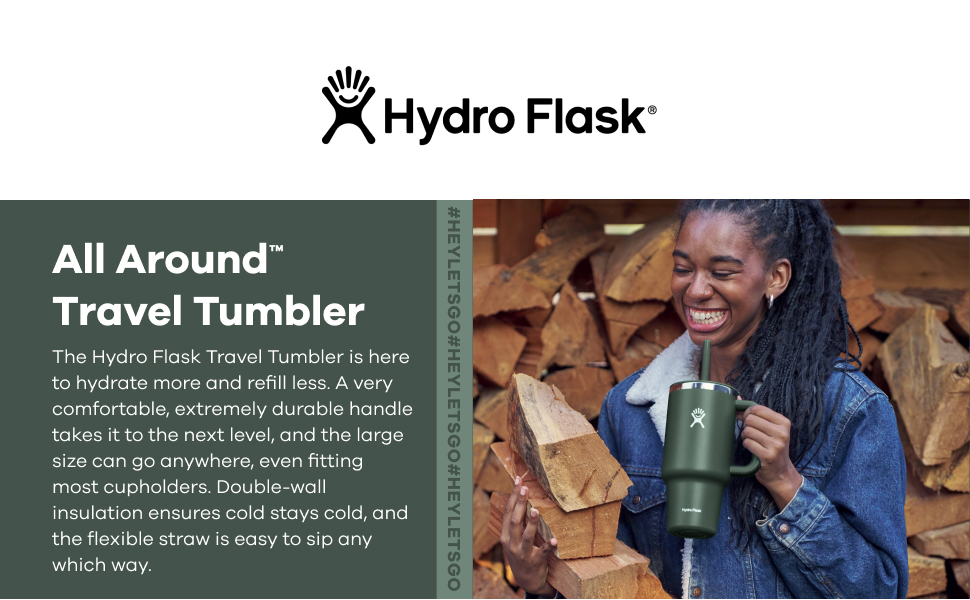
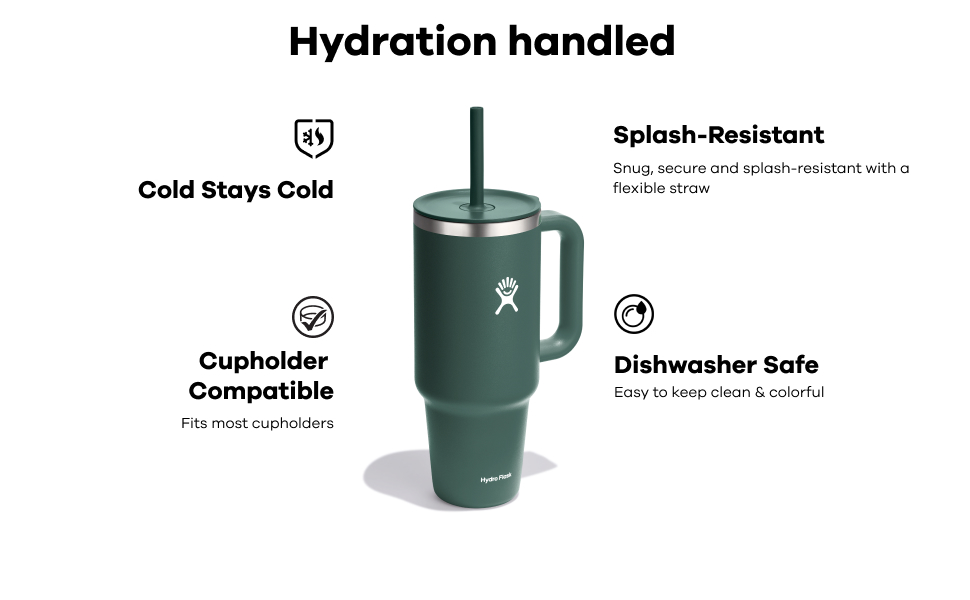

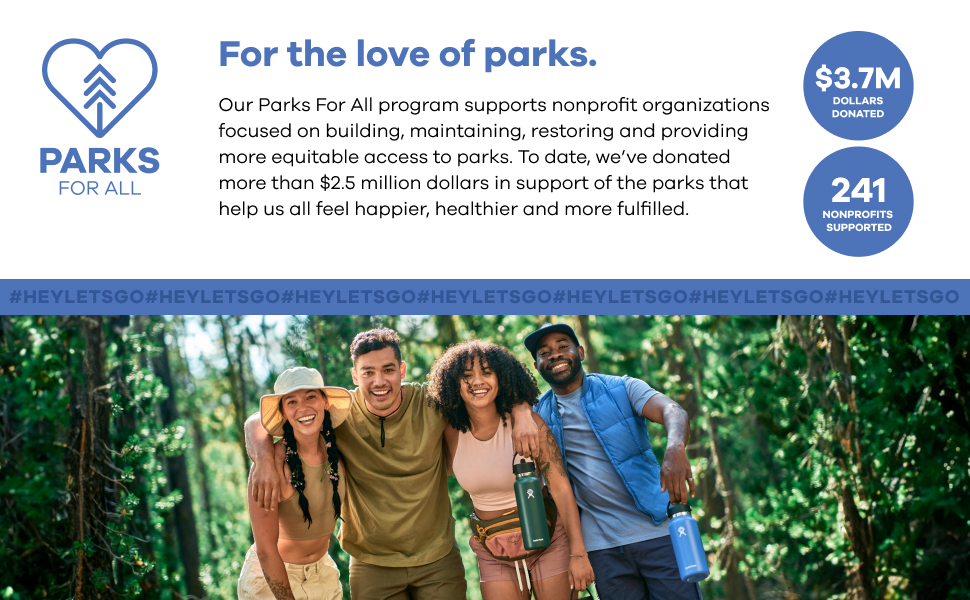
The Good, the Bad, and the Text-Heavy
The Good: The final content has a nice touch, mentioning that a portion of the proceeds is donated to build parks and contribute to the community. It’s always great to see a brand with a sense of social responsibility, especially since customers love feeling like they’re making a difference with their purchase.
The Bad: The A+ content is a bit of a snoozefest. It’s text-heavy and not very cohesive. The images don’t visually represent the features well, and there’s a disconnect between the text and images, leaving buyers confused.
Let’s Talk About Image 2
Image 2: This image highlights four core features of the thermos, but the design feels rushed. Three features have icons, but the “splash resistant” feature does not. Consistency is key! Plus, adding small explanatory images next to each feature would help customers instantly get what you’re talking about.
Final Thoughts
This set of images captures the “fun” aspect of the product with its dynamic and youthful vibe. However, it misses the mark on showcasing close-up shots of the features, leaving buyers unclear about the product’s composition. The visual elements need more relevance and detail to truly shine.
So, don’t let your product get lost in the Amazon jungle. Let’s make it the star of the show with stunning, intuitive, and unique A+ content!
If you are an Amazon Seller looking for free help with any Amazon related issues from me or other sellers with whom you can network, don’t hesitate and join our discussion forum for Amazon Sellers.
To stay in touch on Facebook, feel free to join and post into my large Amazon Seller Performance – Friendly Advice – Worldwide Facebook group, where you will be very welcome too.
Additionally, here you can watch my YouTube video, where I am presenting you several secret tips about appealing Amazon Seller Account suspensions (don’t be confused by the opening of the video, where I am enjoying a vacation – it’s a part of the story):
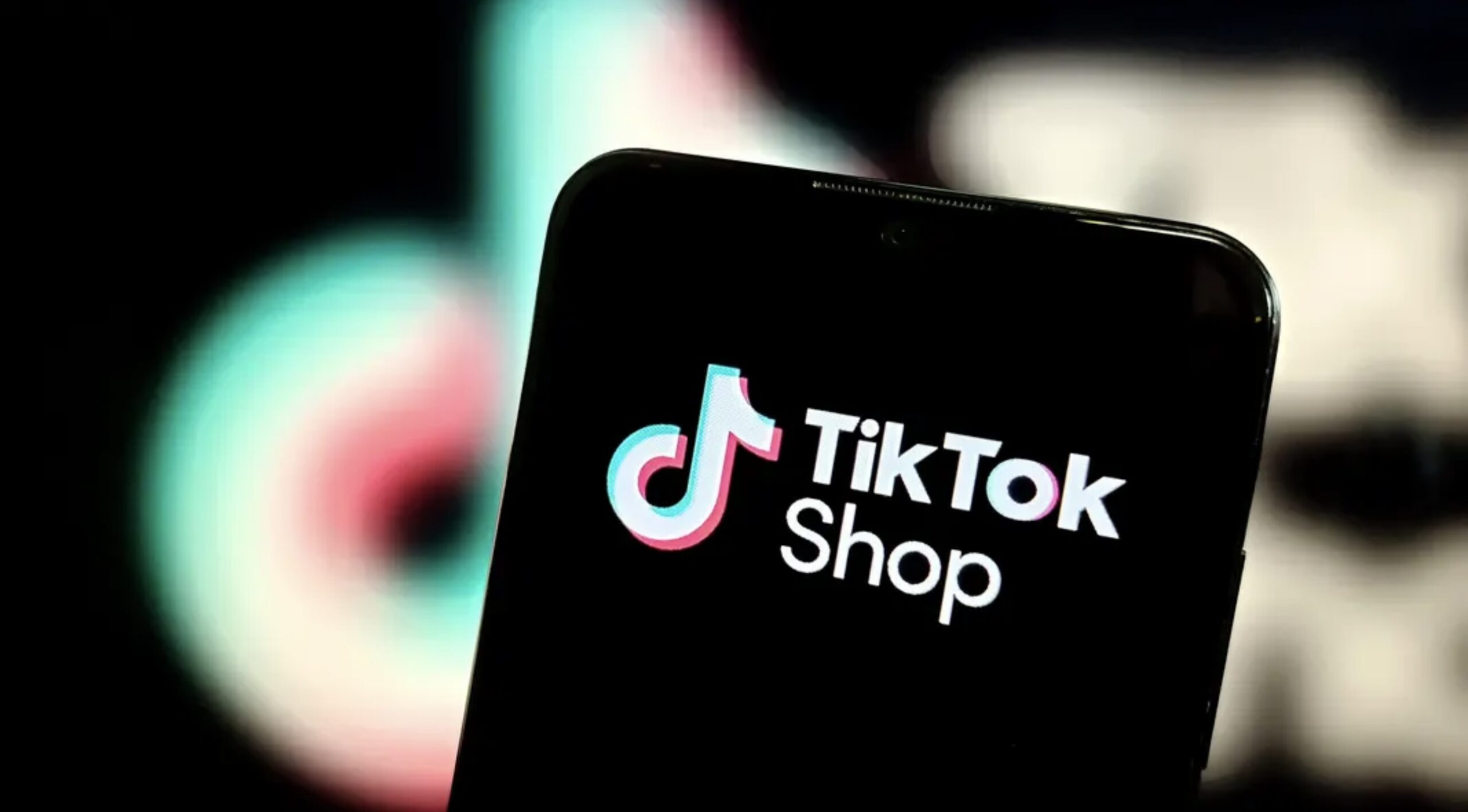
TikTok isn’t just for dance challenges and viral pranks anymore; it’s the new frontier for businesses looking to make a splash. With millions of users logging in daily for their fix of catchy and fun videos, TikTok has transformed into a selling powerhouse. If you’re not already leveraging TikTok Shops, you’re missing out on a goldmine of opportunity.
The Allure of TikTok Shops
TikTok’s charm lies in its simplicity and massive user base. It’s like the cool kid at school who everyone wants to be friends with. For businesses, this means a ready-made audience eager to discover new products. Plus, setting up shop on TikTok is straightforward and low-risk, making it a perfect playground for budding entrepreneurs.
Enter Inboostr: Your Secret Weapon
Here’s where things get exciting. Inboostr has created a database of over 100K influencers, complete with bespoke hygiene screening tools and thorough manual investigations into each influencer and their feed. Translation? We’ve done the legwork to ensure you’re partnering with top-notch influencers who can genuinely boost your brand.
Easy Peasy Logistics
Got products manufactured in China? No problem. Inboostr handles the logistics, shipping your goods to our American warehouse and managing your TikTok business. We connect your products to our big TikTok shop, giving you an easy entry into this booming market.
One-Stop Solution
Inboostr’s got you covered from start to finish. We help you find the right influencers, manage logistics, and run your TikTok business. All you need to do is watch the sales roll in.
Ready to Dive In?
TikTok Shops are more than just a trend—they’re a lucrative opportunity waiting to be tapped. With Inboostr’s comprehensive support, you can jump in with confidence and start reaping the rewards. So, what are you waiting for? The TikTok crowd is ready and waiting.
If you are an Amazon Seller looking for free help with any Amazon related issues from me or other sellers with whom you can network, don’t hesitate and join our discussion forum for Amazon Sellers.
To stay in touch on Facebook, feel free to join and post into my large Amazon Seller Performance – Friendly Advice – Worldwide Facebook group, where you will be very welcome too.
Additionally, here you can watch my YouTube video, where I am presenting you several secret tips about appealing Amazon Seller Account suspensions (don’t be confused by the opening of the video, where I am enjoying a vacation – it’s a part of the story):
-

 All Blogs & Seller News2 years ago
All Blogs & Seller News2 years agoYou would never think this could get you suspended! Amazon continues its wave of Buyer Account closures, learn what is new!
-

 Amazon Seller News3 years ago
Amazon Seller News3 years agoMeltable inventory restrictions start April 15, 2021
-

 All Blogs & Seller News2 years ago
All Blogs & Seller News2 years agoWatch out! Amazon is mercilessly cracking down on dropshipping!
-

 All Blogs & Seller News2 years ago
All Blogs & Seller News2 years agoHow to submit WEEE registration numbers on Amazon and what does it mean?
-

 All Blogs & Seller News2 years ago
All Blogs & Seller News2 years agoWhy isn’t Amazon doing anything to help third party sellers affected by the situation in Ukraine?
-

 Amazon Seller News2 years ago
Amazon Seller News2 years agoWhat is the difference between FNSKU and SKU?
-
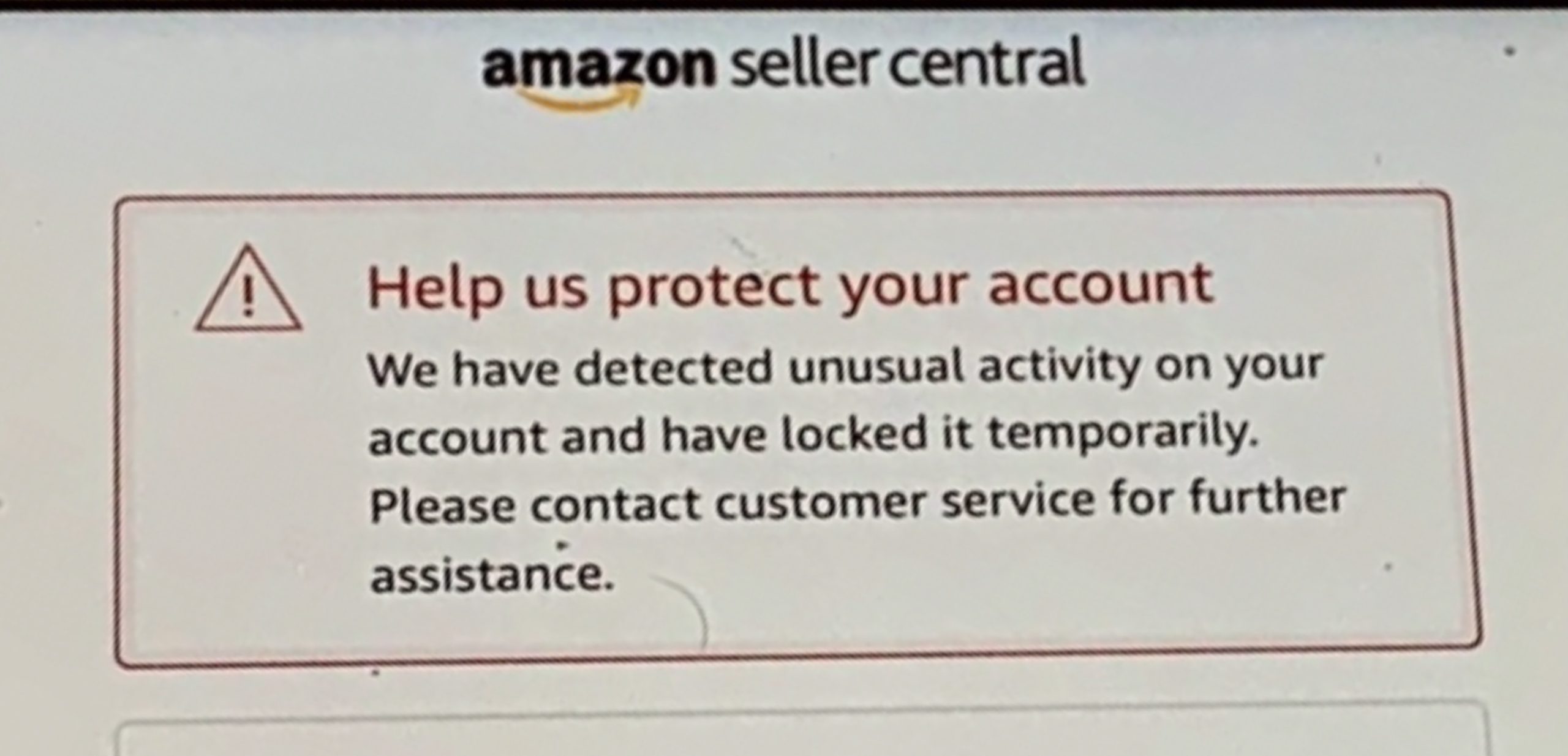
 Amazon Seller News3 years ago
Amazon Seller News3 years agoWhat to do when your Amazon Seller Account gets placed on a hold?
-

 Amazon Seller News3 years ago
Amazon Seller News3 years agoFind out if any of your Amazon listings include prohibited keywords














You must be logged in to post a comment Login